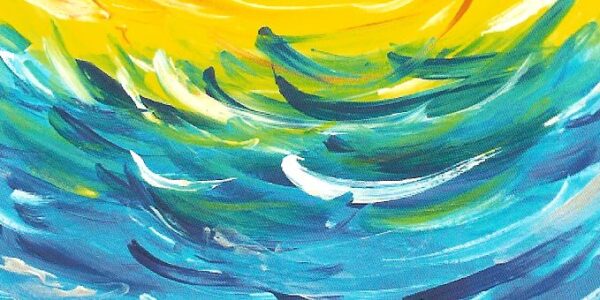When you hear the term ‘Blue Zones’, which represents regions in the world where there are a higher concentration of long living people and centenarians, what do you envision? I see a village of Smurfs! LOL
Childhood activities are engrained in our neurological psyches, and the fun pastime of watching cartoons is no exception. Of all the shows that I recall watching, the Smurfs was one of my favourites.
They were so cute, industrious, and funny! Papa Smurf was well over 500 years old and the longest living Smurf; while the rest of the Smurf community were around 100 years old and that was considered young.
How does this relate to Blue Zones in the world today?
The term ‘Blue Zones’ first appeared in 2005 in the National Geographic magazine that highlighted “The Secrets of a Long Life”.
People of these regions live longer than the norm. In addition, they avoid the chronic lifestyle diseases that most people are plagued with in modern day society such as heart disease, stroke, obesity, osteoporosis, diabetes, Alzheimer’s, etc.
The survival curve of these Blue Zone populations looks different than the rest of the world. Instead of an early peak and then a steady decline, which includes degeneration and disease, they live long, healthy, active lives, and die in old age, quickly, painlessly, and cheaply.
Where are these Blue Zones?
You may wonder if you are living in a Blue Zone…
Here is the list:
- Ikaria, Greece
- Okinawa, Japan
- Ogliastra Region, Italy
- Loma Linda, California
- Nicoya Peninsula, Costa Rica
What do they do differently?
Is it because they are vegetarian or vegan? Nope, some of these Blue Zone populations are meat eaters.
Is it because they have ‘healthier genetics’? Nope, the field of epigenetics has proven that our genes are simply a template; how they are expressed depends on other factors.
Is it because they have cleaner drinking water? Nope, the countries that are noted for having the cleanest drinking water are not even on this list.
So what gives? Well, it appears to be a combination of lifestyle factors such as:
- Movement and exercise – They are not sedentary. These folks get lots of daily activity and live in the types of environments that constantly nudge them into moving without thinking about it. They are not reliant on modern day mechanical conveniences.
- Community connection – They prioritize community connections. At a young age, they create ‘Moais’, which are social networks of lifelong friends that are dedicated to supporting each individual’s social, financial and spiritual needs and interests.
- Spirituality – They have a strong spiritual faith and positive outlook on life.
- Daily recharge – They take time for naps, meditation, prayer and relaxation.
- Sense of purpose – They live intentionally and have a meaningful understanding of where and how to direct and place their energy.
- Plant eaters – They fuel up on fruits and vegetables and get lots of phytonutrients, fibre, vitamins, and minerals in their diet.
- Less calories – In general, they do not eat a lot. Fewer calories have been known to prolong one’s lifespan.
- Drink Green tea – This type of tea is packed with various essential phytonutrients, including the right amount of caffeine, which enhances healthy circulation in the heart and in the brain.
- Enjoy good fats and salt – Fish is a major staple of the Okinawans’ diet. So, they are getting Omega 3s. They are big on miso, soy sauces, and various forms of seaweed and green leafy vegetables, which contain Omega 6s.
- Drink alcohol moderately – They only drink 1 to 2 glasses per day with a friend and/or with food.
Putting this into perspective…
The life expectancy of today’s North American averages 78.2 years.
All things considered; this may sound high. However, often those later years are not lived actively, independently, or joyfully. Instead, they are often spent in pain, on high doses of medication, and even bedridden.
The people of these Blue Zones, on the other hand, are aging gracefully and enjoying their elder years to their fullest.
As you can see, none of their lifestyle habits are rocket science or challenging to implement. In fact, they are all enjoyable and even fun! But they do take time to prioritize and cultivate, and do not happen simply by chance.
You must be intentional with your own lifestyle habits. Additionally, you can recruit others to join you in the ‘healthy longevity mission’, so you have community support and companionship.
This is why I’m excited about, and grateful for, our growing Brain Fitness community! While we emphasize cognitive health and functioning for all ages, we also prioritize mental health, wellness, longevity, and community spirit.
As a challenge to all of you reading this, how about you consider living your life like you are a ‘Blue Zoner’ and implement strategies from the list above?
Perhaps with your wonderful lifestyle choices, role modelling and leadership, you will transform your current community into the next Blue Zone?
And if that’s the case, we will affectionately call you, ‘Longevity Smurf’!
To your Fit Brain & Fit Life,
Jill

